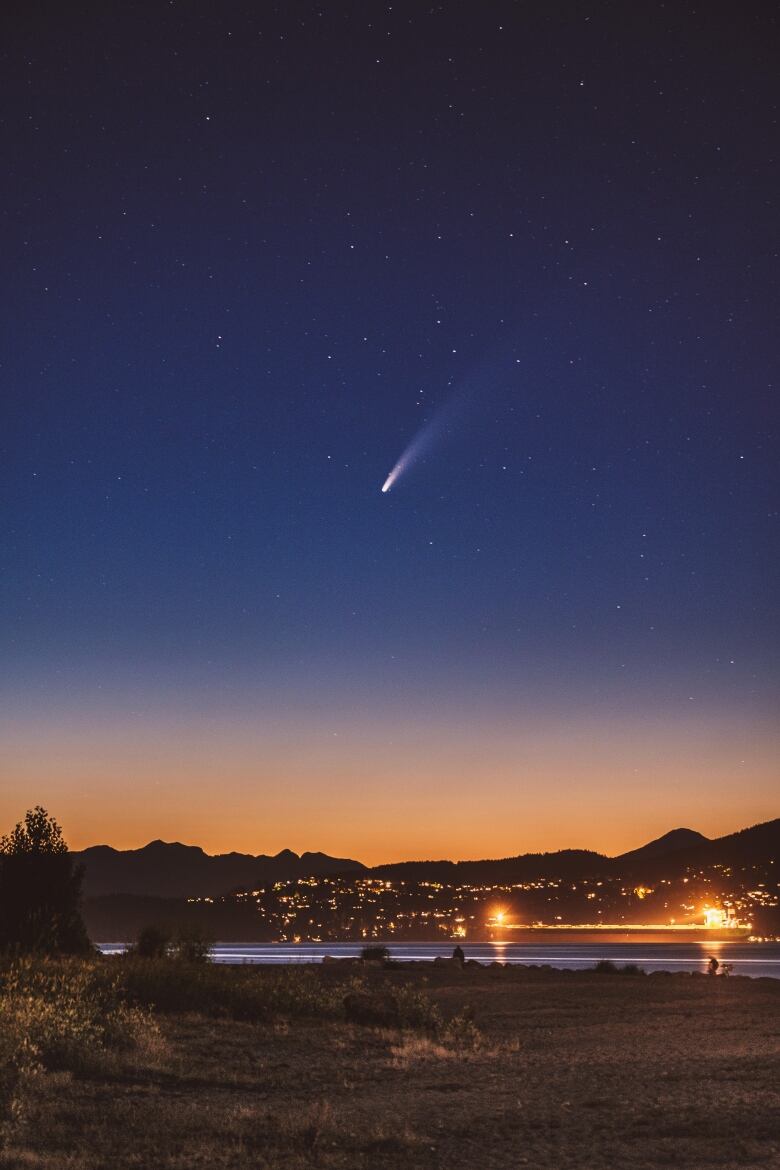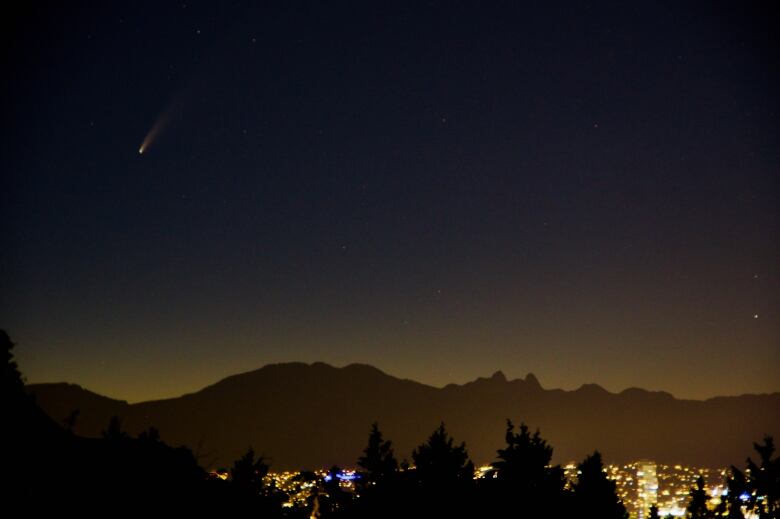Act fast to see this newly discovered comet with the naked eye in B.C.'s night sky
You'd be wise to catch NEOWISE while you can, as it won't be back for another 6,800 years, astronomer says

Stargazers in B.C. currently have a once-in-a-lifetime chance to see a newly discovered comet in the night sky and a local astronomer recommends you try to spot it sooner rather than later.
Rachel Wang, an astronomer at the H.R. MacMillan Space Centre in Vancouver, saysComet NEOWISE C/2020 F3 might not be visible for another6,800 years, so you should feast your eyes on it now.
The best way to do that,Wang said,is to look toward the northwest sky about one hour after sunset.
The comet can be seen with the naked eye.

NEOWISE, named for thespace telescopethat discovered it on March 27, was at firstvisible only through powerful telescopes.
But the comet passed the sun and likely had some kind of outburst of activitythat caused it to become much brighter than expected.
The comet, an ancient ball of ice and rock that orbits the sun, likely came fromthe outer edges of the solar system.

According to Wang, it has two tails a feathery dust tailand an ion tail that she says points in different directions. In some pictures,the smaller, blue-coloured ion tail is visible, she said.
As comets round the sun, they become brighter as they warm and their ice sublimates that is, turnsdirectly from a solid into a gasand other trapped gases are released. This is what gives comets their tails.

The comet has been visible in the early morning sky for afew days, but Wang says it is better to look for it in the evening because the morning light can be too bright to get a good view.
She said at the moment it can be located within the constellation Lynx, which looks like a big zig-zag in the sky below Ursa Major, the constellation that includes the Big Dipper.
A comet is visiting from the most distant parts of our solar system and making a once-in-a-lifetime visit to our twilight skies! Below are images of comet C/2020 F3 NEOWISE as seen by @ISS_Research. Learn more about the comet and how to watch it: https://t.co/HGlMtyCCFU pic.twitter.com/krG2yC1MpZ
—@AsteroidWatchNo binoculars or telescopes are necessary, but that could soon change again.
"It is dimming in magnitude so it is getting dimmer and dimmer as the days go on," said Wang, who suggests going soon and taking a camera. She said she managed to take a picturewith her cellphone camera.

NEOWISE will make its closest approach to Earth on July 22 at a distance of 103 million kilometres, though it may have already faded by then.
According to CBC meteorologistJohanna Wagstaffe, the night sky should clear for most of the coming days with the exception of Thursday night, when rain is forecast.
With files from The Early Edition and Nicole Mortillaro












_(720p).jpg)


 OFFICIAL HD MUSIC VIDEO.jpg)
.jpg)



























































































